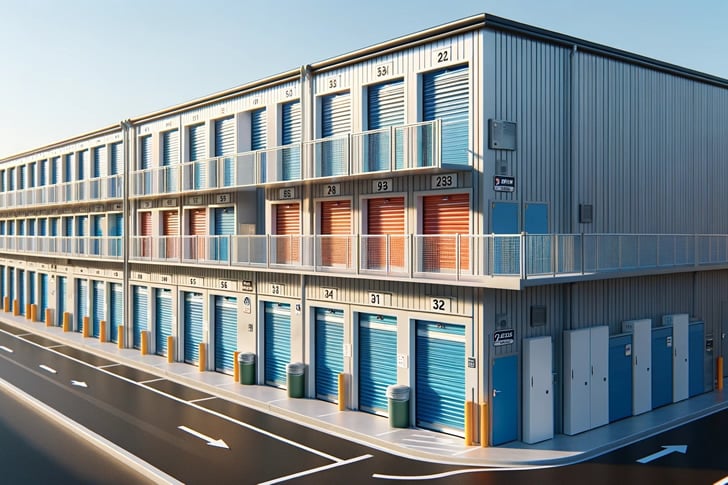Smart Storage Solutions: How to Get Cheap Storage Units
Finding affordable storage solutions involves comparing different types of units and taking advantage of discounts and special offers.

Introduction
Whether relocating, downsizing, or simply decluttering, many individuals and businesses find themselves in need of additional storage space. This guide will explore various storage options, including self-storage, climate-controlled units, and portable storage solutions, and provide tips on how to secure these facilities at a reduced cost.
Understanding Different Types of Storage Units
Self Storage Units
Self-storage units are the most common storage solution for both personal and business use. These units are typically housed in a large facility, where customers can rent space varying in size from a small locker to a large garage-sized unit. Accessibility varies, with some units offering 24/7 access and others limited to business hours.
Climate-Controlled Storage Units
For items sensitive to temperature or humidity, such as wooden furniture, electronics, or important documents, climate-controlled storage units are ideal. These units maintain a consistent environment to prevent damage from extreme temperatures or moisture.
Portable Storage Units
Portable storage units are delivered to your location, where you can load them at your convenience. Once packed, these units can be stored on your property, returned to the vendor’s facility, or transported to a new location. This flexibility makes portable storage an appealing choice for short-term, transitional needs.
Storage Units for Rent vs. Sale
While most individuals opt to rent storage units due to short-term or fluctuating needs, purchasing a storage unit can be a cost-effective solution for long-term or commercial requirements. Buying a unit often involves initial higher costs but can save money over time, especially when rental prices increase.
Key Factors Influencing Storage Unit Prices
- Size of Unit: Common sizes range from small lockers to 10 x 30 feet or larger units. Naturally, the larger the unit, the higher the cost.
- Location: Urban areas typically have higher storage costs compared to rural areas due to higher property costs.
- Climate Control: Units with climate control are more expensive but necessary for storing sensitive items that could be damaged by extreme temperatures or humidity.
- Indoor vs. Outdoor Access: Indoor units, especially those with climate control, tend to cost more than outdoor units with drive-up access.
- Level of Security: Enhanced security features like 24-hour surveillance, gated access, and individual alarms may increase costs.
- Insurance: Some facilities require you to purchase insurance, which can add to the monthly cost.
Finding Affordable Storage Solutions
Comparing Prices and Services
To find the best deals on storage units:
- Use Online Comparison Tools: Websites like SpareFoot, SelfStorage.com, and others allow you to compare sizes, prices, and features of storage units in your area.
- Check Customer Reviews: Look at customer feedback to ensure the facility is reliable and provides good service.
- Negotiate Rates: Some storage facilities are willing to negotiate prices, especially for long-term contracts or larger units.
Discounts and Promotional Offers
Many storage companies offer discounts and promotions, particularly during off-peak times or when they are looking to fill units quickly:
- First Month Free: A common promotion offering the first month of storage free as an incentive to sign a longer contract.
- Military Discounts: Reductions for military personnel are frequently available.
- Senior Discounts: Some facilities offer discounts to seniors.
- June Discounts: Specific promotions may be available in June as people often move during this month.
Long-Term Rental Deals
For long-term storage needs, renting a unit for an extended period often comes with a discount. Negotiating a longer-term agreement can secure a better rate, as facilities prefer the assurance of a long-term tenant.
Cost Examples Across Different U.S. Districts
Here are the average monthly rental prices for a 10×10 foot self-storage unit in ten different U.S. districts:
- New York, NY: $280
- Los Angeles, CA: $175
- Chicago, IL: $150
- Houston, TX: $120
- Phoenix, AZ: $110
- Philadelphia, PA: $140
- San Antonio, TX: $100
- San Diego, CA: $180
- Dallas, TX: $135
- San Jose, CA: $200
These prices can vary significantly based on location, facility quality, and additional features like climate control or enhanced security.
Conclusion
Securing affordable storage solutions requires understanding the different types of storage available and the specific needs of your items. By comparing options, checking for promotional discounts, and negotiating terms, you can find a storage unit that fits your budget and your storage needs. Whether for personal belongings during a move, excess business inventory, or specialized items requiring climate control, there is a storage solution to meet every requirement at a cost-effective price.







Recent Comments